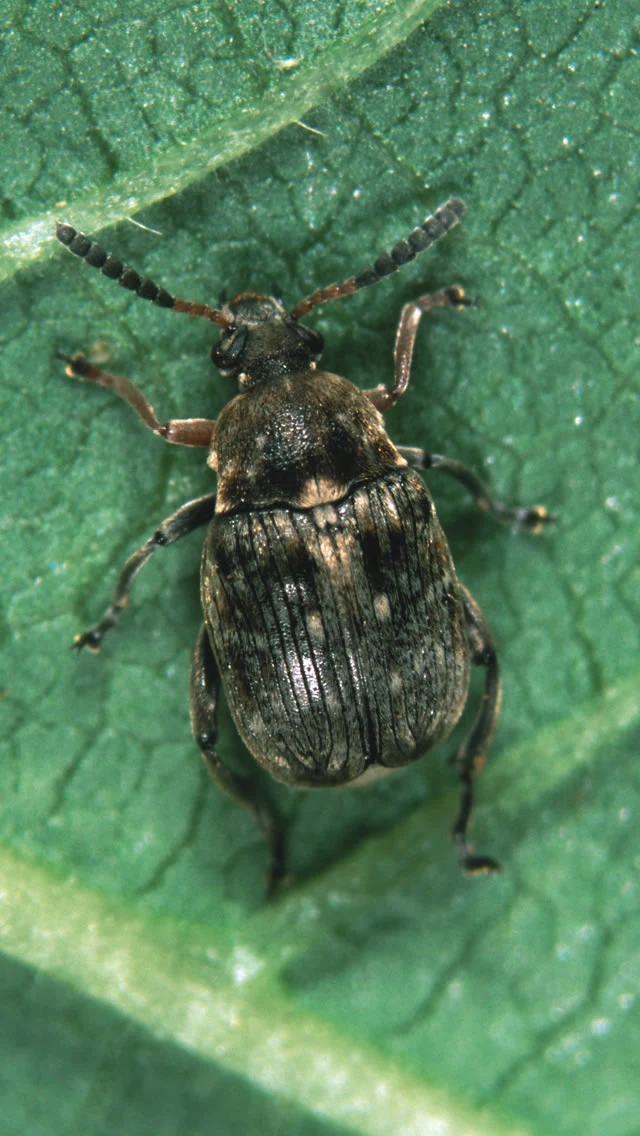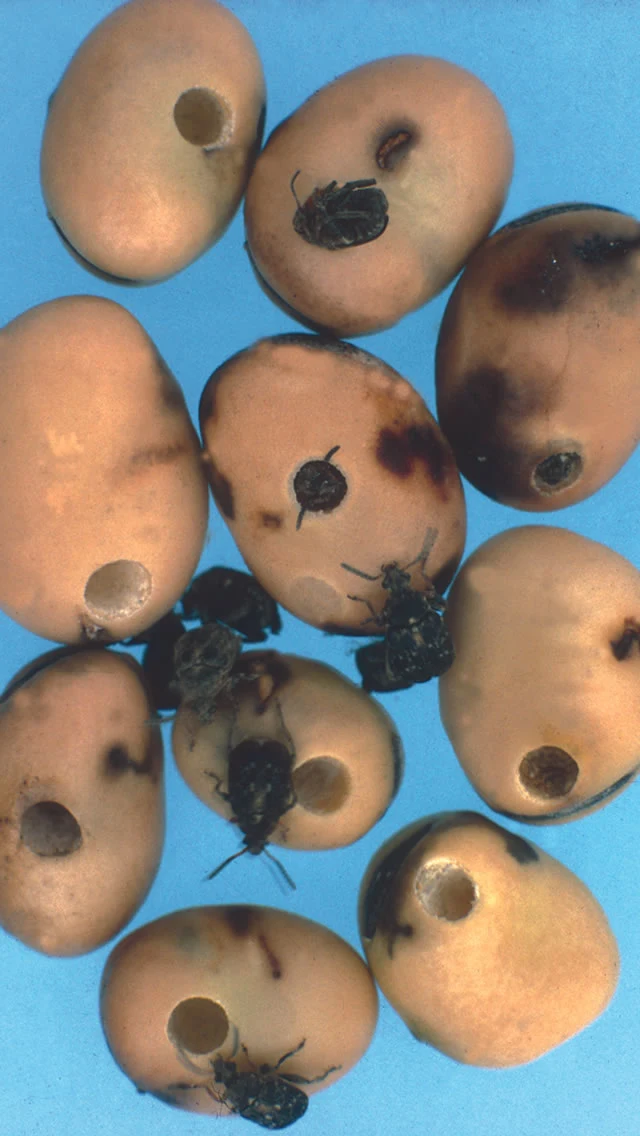
Bruchid Beetle
Bruchus rufimanus

Bruchus rufimanus
Identification
The adult beetles are small, 3-5 mm, black with an oval body. The key distinguishing features include antennae which are orangey coloured towards the base, front legs a reddish colour and middle and rear legs which are black. See picture 3.
Symptoms
Individual circular exit holes, where the adults have bored out from within the individual seeds can cause sample rejection. There can be more than 1 exit hole per seed.
Life-cycle
Bruchid beetles overwinter in sheltered areas such as hedges and other dense shrubby habitats. In warm conditions, when temperatures are above 20 ̊C for several days, they fly into flowering bean crops from late May through to June. After feeding on the crop pollen, small (0.5-0.75 mm) white/yellowish oval shaped eggs are laid individually or in small groups on developing pods. After a few days the larvae emerge and burrow through the pod wall and then tunnel into the developing seeds. When fully fed the larvae pupate in the seed and when fully mature the adults hatch and bite through the wall of the seed leaving the characteristic circular exit holes. There is 1 generation per year.
Importance
Bruchid beetles are a relatively recent introduction and are thought to originate from the warmer climates of the Mediterranean and African regions. Bruchid beetle activity has been increasing in recent seasons and where severe attacks occur, crops destined for human consumption, export or for seed can be rejected. Both field and broad bean crops can be at risk of attack.
Threshold
There is a current LINK project working to establish thresholds and risk forecasting.
PGRO advice is:
With 2 consecutive days with temperatures greater than 20 ̊C spray if adults can be found on the crop when beans have developed first pods. A second spray should be applied 7-10 days later.
Decis will give control of bruchid beetles when applied for the control of other insect pests in field beans.

Adult bruchid beetle. Note the orangey coloured base to the antennae and the reddish front legs

Bruchid beetle damage

Bruchid beetle infestation


